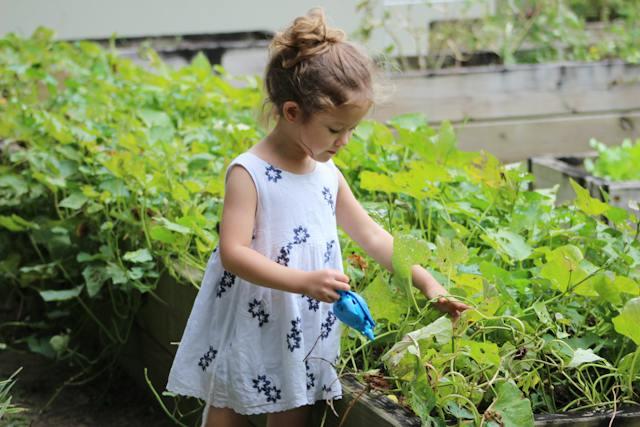 Photo by Maggie My Photo Album from Pexels
Photo by Maggie My Photo Album from Pexels Introduction
Gardening with kids can be a fun and educational experience that fosters a love for nature, teaches responsibility, and encourages healthy eating habits. By involving children in the joys of gardening, you can spark their curiosity, nurture their creativity, and create lasting memories. In this guide, we will explore some tips and ideas for engaging children in gardening activities.
Start Small and Simple
Begin with a small gardening project that is easy to manage and maintain. Choose plants that grow quickly and are hardy, such as sunflowers, beans, or cherry tomatoes. Starting small allows children to see the results of their efforts sooner, keeping their interest and enthusiasm high.
Create a Kid-Friendly Garden Space
Designate a specific area in the garden or create a raised bed that is dedicated to the kids' gardening activities. Make it visually appealing with colorful signs, kid-sized tools, and vibrant plants. Ensure the space is easily accessible and safe for children to work in.
Involve Kids in Planning
Let children be a part of the planning process. Discuss what plants they would like to grow, what flowers they find appealing, or what vegetables they enjoy eating. Allow them to choose a few plants and take ownership of their selections.
Teach Gardening Basics
Teach children the basics of gardening, such as how to prepare the soil, sow seeds, water plants, and weed the garden. Explain the importance of sunlight, water, and nutrients for plant growth. Make it a learning experience by discussing the life cycle of plants and the role of pollinators.
Make it Fun and Hands-On
Gardening should be a hands-on and enjoyable experience for children. Let them get their hands dirty, feel the soil, and explore different textures. Encourage them to observe insects, butterflies, and other creatures that visit the garden. Incorporate fun activities like scavenger hunts, garden crafts, or making homemade plant markers.
Encourage Responsibility
Teach children the importance of responsibility by assigning them specific tasks related to garden care. Assign watering duties, weeding responsibilities, or checking for pests. This helps children develop a sense of ownership and accountability for their garden.
Incorporate Learning Opportunities
Use the garden as a platform for learning and exploration. Teach children about the different parts of plants, the role of pollination, and the importance of biodiversity. Introduce concepts of composting and recycling by involving them in composting kitchen scraps or collecting rainwater for watering plants.
Harvest and Cook Together
The joy of gardening extends beyond planting and nurturing. Involve children in harvesting the fruits, vegetables, or herbs they have grown. Explore recipes together and cook meals using the freshly harvested produce. This helps children understand the connection between the garden and the food they eat.
Celebrate Achievements
Celebrate the accomplishments and milestones in the garden. Take pictures of the plants as they grow and document the progress. Create a garden journal or scrapbook to record observations, drawings, and experiences. This allows children to reflect on their gardening journey and see the fruits of their labor.
Be Patient and Flexible
Gardening teaches patience and resilience. Understand that gardening is a process, and not everything may go according to plan. Embrace the learning opportunities that arise from challenges and adapt as needed. Encourage children to learn from mistakes and celebrate the successes, regardless of the outcome.
Conclusion
Gardening with kids is a wonderful way to engage them in the joys of nature, teach responsibility, and foster a love for gardening and the environment. By starting small, creating a kid-friendly garden space, involving children in planning and learning, making it fun and hands-on, encouraging responsibility, incorporating learning opportunities, harvesting and cooking together, celebrating achievements, and being patient and flexible, you can create a memorable and rewarding gardening experience for children. Embrace the opportunity to connect with nature, spark curiosity, and create lasting memories with your children in the garden.



 2840 Views
2840 Views
 116074 Views
116074 Views
 8482 Views
8482 Views
 112246 Views
112246 Views